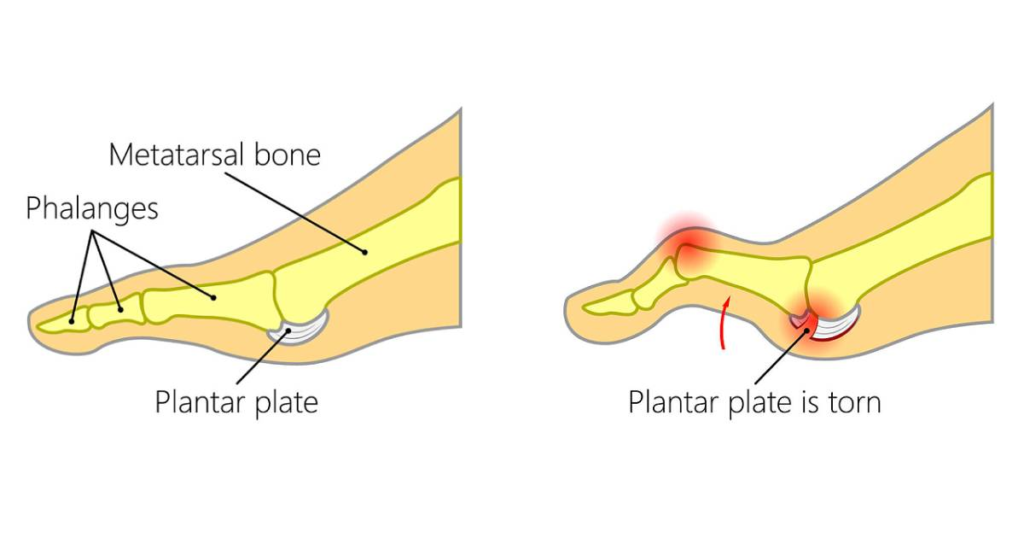At Feet Street Podiatry we are dedicated to helping you maintain healthy and happy feet! Today, we want to discuss a common foot condition known as a plantar plate tear.
What is the Plantar Plate?
The plantar plate is a small ligament located underneath the base of the toes. It is responsible for stabilizing the toe joints and preventing them from over-extending. When the plantar plate becomes damaged or torn, it can cause significant pain and discomfort in the affected area.

How do Plantar Plate Tears occur?
Although the thin plantar plate is very strong, overuse can cause the structure to weaken and eventually tear and rupture. Plantar plate tears are most commonly caused by overuse or injury. Athletes, dancers, and those who engage in activities that involve repetitive impact on the feet are at an increased risk of developing this condition. Additionally, individuals with pre-existing foot conditions such as bunions or hammertoes may also be more susceptible to plantar plate tears.
Individuals are at increased risk of rupturing the plantar plate if they:
Transfer excessive forces through the forefoot
– Overpronate
– Have hypermobile feet
– Have high arches
– Have a long 2nd toe (Morton’s toe)
This condition is common and affects individuals of all age groups and genders. It can often be seen in individuals who have made sudden increases in physical activity; changes such as beginning a fitness program or training for a marathon can cause symptoms to present and increases the risks of a partial or complete rupture.
What are the symptoms?
Symptoms of plantar plate tears include:
– Sharp pain and/or swelling under the ball of the foot extending towards the toes, particularly when walking or standing for long periods of time.
– Pain that is most commonly found at the base of the 2nd and 3rd toes and intensifies when barefoot or tip-toeing
– In more severe cases, a visible deformity in the toes may develop, giving the appearance of splayed apart toes, known as a ‘Daylight Sign’. This is a clinical indication of a plantar plate rupture.
– In some cases, a noticeable bump or lump may develop on the affected area.
Hammer toes, floating toes, dislocations, and toe separations are also typical associated conditions of plantar plate tears. If left untreated, plantar plate tears can lead to chronic pain and even deformities in the affected toes.

How are Plantar Plate Tears treated?
As with most medical conditions, the earlier the diagnosis, the greater the chances of accelerated healing and a full recovery with minimal treatment. Fortunately, there are several treatment options available for plantar plate tears. Conservative measures such as rest, ice, and physical therapy can help reduce pain and inflammation. Your podiatrist may demonstrate taping techniques to help support the affected digit. Custom orthotics and footwear modifications may also be recommended to provide additional support and relieve pressure on the affected area.
In more severe cases, surgery may be necessary to repair the damaged plantar plate. This may involve a minimally invasive procedure or a more complex surgery depending on the extent of the injury.
At Feet Street Podiatry, our team of experienced podiatrists is dedicated to providing the highest level of care for all of your foot and ankle needs. If you are experiencing symptoms of a plantar plate tear or any other foot condition, don’t hesitate to schedule an appointment with us today. We are here to help you get back on your feet and back to doing the activities you love!
